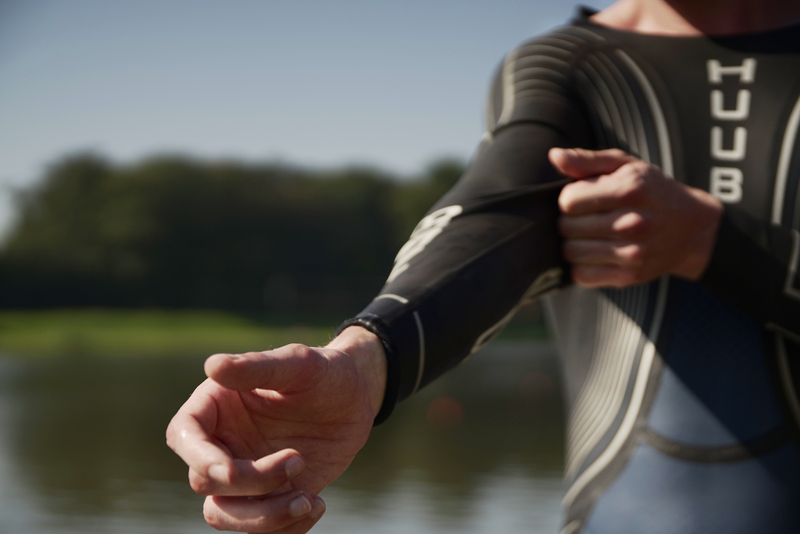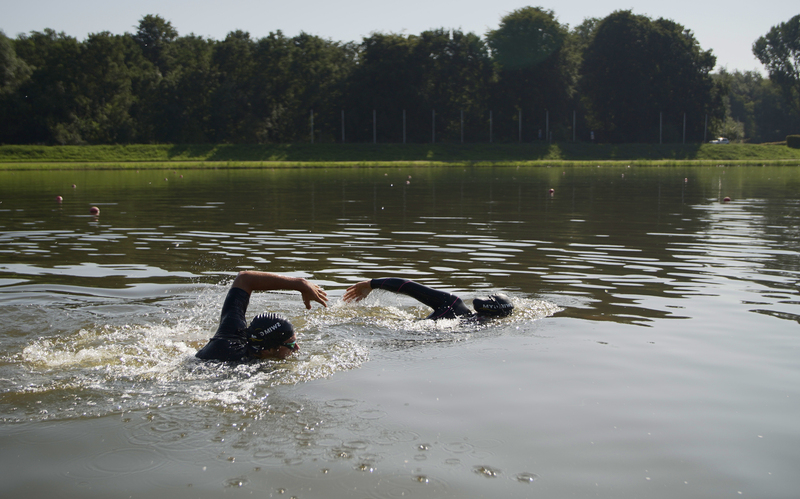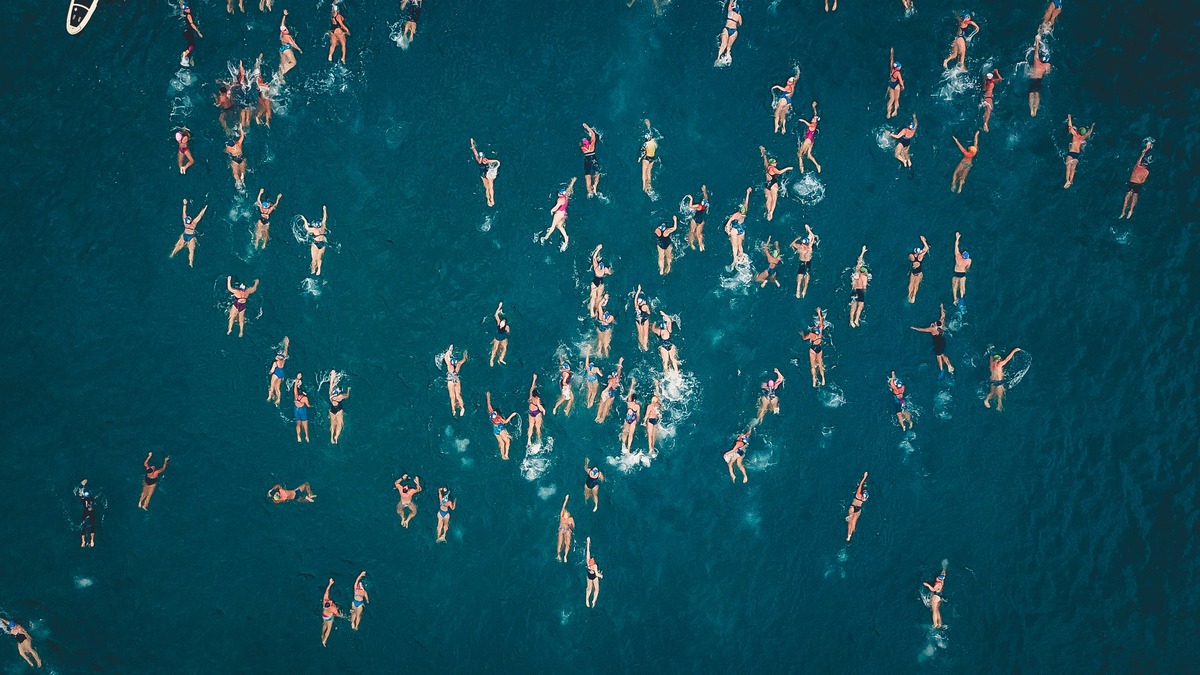Swimming blog - Beginner's Guide To Open Water Swimming
Are you new to open water swimming or in need of some refreshing? It's extremely important to be safe and confident in open waters. Therefore we created this guide. It will prepare you with the right equipment, safety measures and tools to have the greatest swim.
There are a few things to arrange before getting into your first swim. Apart from this guide you need to make sure you're conditioned enough to swim in the open waters. SwimGym.com provides great programs for every swimming level to get you there, so that shouldn't be a problem.
Next you need to know what the water conditions are like, what equipment to rent or purchase, and learn how to be confident during your first open water swim. Let’s get ready to take the dive.
Water conditions
1.1 Water temperature
Whether it’s a sunny day or not, always check the water temperature first. Cold water is the main concern in open water swimming. Water is 25 times more conductive than air, it will therefore strip off heat really quickly. Below 25°C a wetsuit is recommended, not just for added warmth but also for added buoyancy, which in turn will increase your confidence in the water.

It can be quite overwhelming to get the right wetsuit for the water conditions you are swimming in. Just follow the guidelines in the table advising on maximum distances you are allowed to swim and wetsuit thickness related to water temperature to minimize the risk of becoming hypothermic.
| Temperature | Maximum Distance | Wetsuit Thickness |
| 12 - 13 °C | 750m | 4 mm fullsuit with boots |
| 13 - 14 °C | 1500m | 3mm fullsuit |
| 14 - 17 °C | 3000m | 2mm fullsuit |
| 17 - 21 °C | 4000m | 1mm fullsuit |
| 21 - 25 °C | 4000m | 1mm fullsuit (or no suit) |
| 25 - 27 °C | 4000m | No suit |
The international swimming federation does not recommend swimming for longer periods of time in water colder than 14°C. We are not saying don’t swim in cold water, but do so knowingly and in stages.
1.2 Current and waves
Do a check on local websites or ask local surfers or fishermen about waves and currents so that you avoid rip tides or extreme sea conditions. To avoid having to swim against the current on your way back, swim against the current first. That way when you turn back, you have the current pushing you along which makes it manageable for your tired body.
1.3 Do not dive
Don’t dive or jump into water where you can’t see the bottom. This may sound like simple advice, but the dangers of murky water are many: shallow, rocky or filled with sharp objects. Examine your entry point to make sure it is deep and safe. 
1.4 Boat traffic
Try and find water that has little or no traffic on it. This makes for easier and safer swimming. A lake will most likely have less boat traffic than a big water canal. If boat traffic can’t be avoided, swim close to the shore and at times where the traffic is less.
Equipment
2.1 Wetsuit
You will need a wetsuit to keep you warm and buoyant. Wetsuits for open water swimming and triathlon are widely available and come in different formats. In the guideline table above the wetsuit thickness related to the water temperature is noted, before purchasing, choose the wetsuit with the right thickness for you.
Many people assume that only expensive wetsuits are of high quality, but this is simply not the case. An entry-level wetsuit will provide you with everything you need to get you started. As you advance in open water swimming, you will understand what you want from your wetsuit and invest in a more expensive one.
You might not be ready to buy a new wetsuit, luckily you can rent one at an open water venue or triathlon shop. Really emphasize finding the right size for you, because if it's too small you’ll feel restricted while breathing and if it’s too big it will feel like a big net.
2.2 Bright swimming cap and buoy
A bright swimming cap and a swimming buoy are also a must. Visibility and safety are key in open water. People in boats must be able to see you. A colourful swimming cap and a bright orange swimming buoy will do the job very nicely. On top of visibility, the swimming buoy is a floating device that allows a swimmer to float in case of fatigue, cramp or any other emergency. In addition to the safety aspect, the swimming buoy has room for a towel and valuables. They will stay safe and dry.

2.3 Goggles
Invest in some new goggles. Nothing is worse than goggles fogging up during a long endurance swim. You could purchase open water goggles as they tend to be bigger and broader, allowing for greater vision and are softer around the eyes. However, racing pool goggles are also fine. It is recommended to get tinted goggles as they can help with the sun or it’s reflection on the water into your eyes.
Confidence
You now know the water conditions and you have the right equipment, the last thing to think about is feeling confident in the open water.
3.1 Bring a buddy
Don’t ever swim by yourself in open water. Open water can be dangerous so always swim with another person or in a group that can help if there is a need for it. There are some clubs that schedule open water swim sessions throughout the summer. These offer great opportunities to swim in a group and become more comfortable.

3.2 Practise floating
In shallow water, practise floating on your back by lying on your back, and extend your arms to your side. Now try to push the stomach to the sky and lie your head into the water. Have a gentle leg kick to keep the legs up, and slowly breathe in and out. Practise this as much as you need, so that if you ever panic you can go back to this floating position to relax. If you're in need of help, position yourself in the same floating position and just lift one arm up to wave for the attention of fellow swimmers.
3.3 Get used to the view
In shallow water, slowly submerge your head and look around. Start to get used to the feeling of not seeing much underwater and breathe out slowly to relax. While swimming you can most likely still see your arm or part off it, try to keep your focus on this instead of the deep unknown.
3.4 Prepare for after
And at last, be prepared for after your swim. Have a towel and warm clothing to bring your body back up to temperature. The stuff you take off will be wet, like your wet-suit and bathing costume, so have a plastic bag or tri-bag handy that can handle the wet goods easily.
Safety and enjoyment should be foremost priorities. Don’t swim too far your first time. If you get tired, turn onto your back, float and breathe evenly. Continue when ready. Open water swimming is a joy, a privilege and so much fun. Hopefully, this guide will do it justice.

